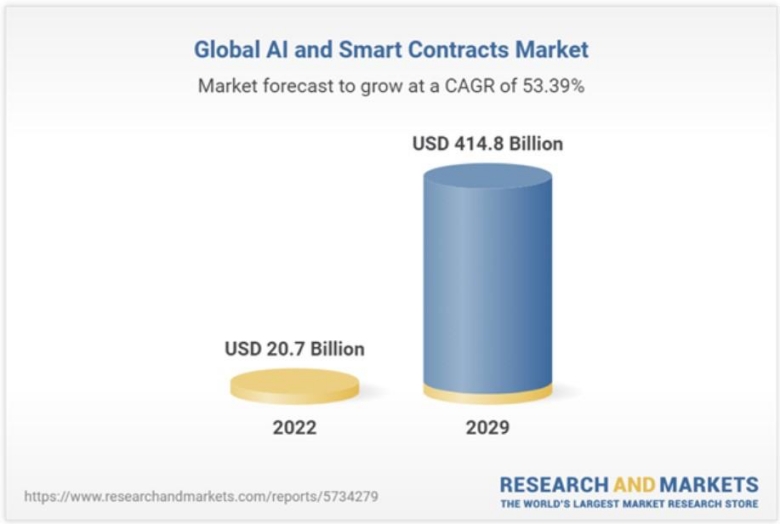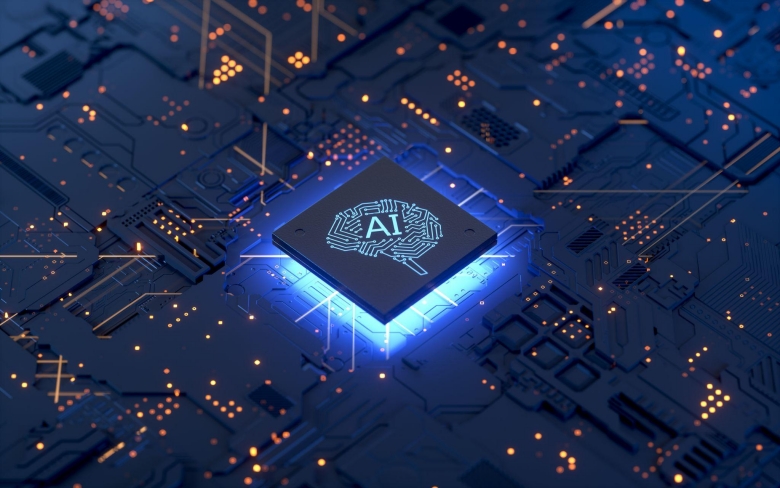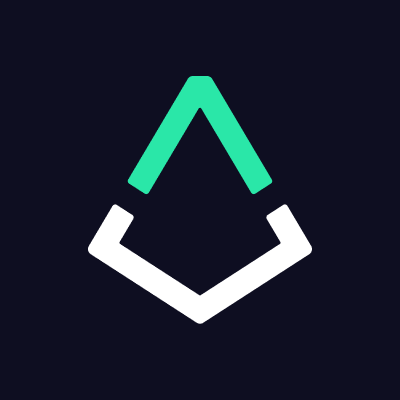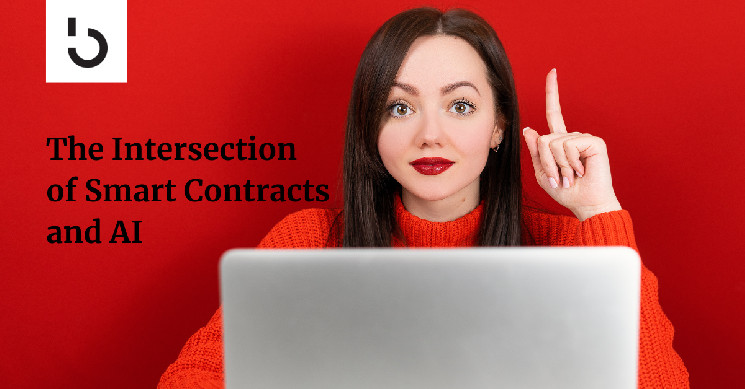Executive Summary: We explore the potential of combining blockchain smart contracts with artificial intelligence. By merging these technologies, various industries will benefit from enhanced security, analytics, auditing, predictive modeling, fraud detection, and cross-chain interoperability.
Key applications include decentralized prediction markets, fraud detection, supply chain management, decentralized autonomous organizations (DAOs), and personalized investment portfolios. Investors can capitalize on this convergence by seeking exposure to innovative AI projects that are showing early user traction.
Blockchain and artificial intelligence (AI) are perhaps the two most disruptive technologies of our time. Can you imagine what they might do together?
Both technologies are a part of what is being called the fourth industrial revolution. While blockchain has been in the spotlight over the past few years, AI has attracted less attention until very recently. The launch of OpenAI’s ChatGPT at the end of 2022 changed everything, with the tool hitting the 5 million user mark in only five days.
Even more important for investors is the forecast for the AI and smart contracts market to grow by 53.4% CAGR through the end of the decade, going from $20.7 billion in 2022 to $414.8 billion in 2029.

This amazing growth can be attributed to the process efficiencies that businesses can secure from AI, and the ability of smart contracts to automatically implement these efficiencies.
Why AI and Smart Contracts go Together
AI can make smart contracts way smarter. Since blockchains operate with data and transactions, they can significantly benefit from AI, a technology that uses data to learn and improve.
Here is how AI could benefit smart contracts:
Security – Smart contracts already provide a high level of security thanks to decentralization. AI can enhance security by identifying potential vulnerabilities and loopholes, contributing to the overall security of smart contracts and reducing the risk of exploitation.
Analytics – AI can be used to build analytics tools that provide insights into smart contract performance, enabling developers and users to make decisions based on data patterns.
Auditing – AI can automatically audit smart contracts to ensure they comply with industry standards and best practices based on the jurisdictions they operate in.
Predictive modeling – AI can navigate historical data to predict smart contract and transaction outcomes, helping parties better understand the potential risks and rewards of a given smart contract. AI can also be used to simulate transactions before they go live.
Dispute resolution – Developers can integrate AI into smart contracts to analyze contract data and suggest fair resolutions in case of conflicts, improving the dispute resolution process and reducing reliance on human intermediaries.
Anomaly detection – AI can monitor contract activity in real-time and identify unusual patterns or red flags, allowing for quick intervention and mitigation of risks.
Cross-chain interoperability – Cross-chain communication is essential for the fragmented blockchain market. AI can facilitate the development of interoperable smart contracts, enabling seamless interactions between different chains and promoting a more cohesive ecosystem.

Current and Future Use Cases
For investors researching real projects using AI and blockchain, here are a few examples of live projects (with their token symbols), as well as potential future applications.
Use Case #1: Decentralized Prediction Markets
Decentralized prediction markets are blockchain-based markets where users trade the outcome of events, which can be related to finance, sports, politics, contests, etc. Some of the largest prediction markets operating in decentralized finance (DeFi) are Augur (REP), Polymarket, and Gnosis (GNO). A total of over $10.6 billion worth of crypto are locked with these three protocols.
 Augur
Augur
Augur is the OG of prediction markets. Founded in 2014, its tagline is “the world’s most accessible, no-limit betting exchange.” It uses the “Wisdom of Crowds” to ostensibly create an accurate forecasting platform. The platform enables users to create a market for forecasting a specific future event, such as who will win a sporting event, or whether the price of an asset will reach a certain level by a specific time.
 Polymarket
Polymarket
Polymarket is an information markets platform. Like other prediction markets, it allows users to speculate on the outcome of various current events. With Polymarket, users are able to build a portfolio of forecasts, profiting if those forecasts are right. Market prices reflect what traders think are the odds of future events, turning trading activity into actionable insights that help people make better decisions. This potentially makes Polymarket a valid source of unbiased and real-time data about future events. Unlike other prediction markets, Polymarket does not have its own token. Instead it uses USDC in its marketplace. With over $5 million TVL it is among the largest prediction marketplaces at the time of this writing.
 Gnosis
Gnosis
Gnosis began as a prediction market on Ethereum back in 2015. Since then it has evolved into the Gnosis Chain, an open framework for development, and supports a number of third-party dapp prediction markets like Azuro, Omen, and Reality Card. These platforms allow users to bet on the outcome of sport events, cryptocurrency prices, technology developments and politics, among other categories. Other products developed by Gnosis include Conditional Tokens, a new asset class designed to facilitate the creation of highly liquid prediction markets; the C0W protocol, which is a permissionless trading protocol; and Safe, a decentralized custody protocol and asset management platform.
AI can take prediction markets to another level by enhancing their efficiency, accuracy, and security. AI algorithms can work alongside smart contracts to improve various aspects, including data analysis, decision-making, and dispute resolution.
AI can analyze massive amounts of historical and real-time data, helping users make informed decisions on market outcomes and potentially develop prediction strategies. This opens the door to more accurate predictions by identifying trends and patterns, which can lead to improved market performance.
Besides analytics, AI can be used for automation, as it can streamline the execution of prediction market transactions, ensuring transparent, tamper-proof, and trustless settlements.
Use Case #2: Fraud Detection
The combination of AI and smart contracts can lead to a more efficient fraud detection system that is adaptable to different threats. Enterprises and researchers can train machine learning models to detect suspicious activities and inconsistencies in transaction data. AI systems with the ability to recognize fraud indicators can monitor transactions in real-time to protect user funds.
Based on AI findings, smart contracts can enforce predefined responses to avoid fund losses, such as freezing accounts, alerting the involved parties, or launching follow-up investigations.
Integrating AI and smart contracts in fraud detection systems represent a powerful solution to reduce financial fraud. Combining AI capabilities in pattern recognition and data analysis with the automation potential of smart contracts enables organizations to build a proactive and resilient fraud detection system to protect end users against financial threats.
Use Case #3: Supply Chain Management
In supply chain management, the two technologies can be merged to enhance transparency, efficiency, and traceability of goods. For example, AI can analyze data from multiple sources, such as Internet of Things (IoT) devices, to monitor the movements of goods and anticipate bottlenecks or disruptions.
Elsewhere, smart contracts can automate transactions, payments, and contract agreements between participants, ensuring the smooth flow of goods and data. This technological symbiosis can ensure better collaboration between multiple parties, reduce paperwork and manual intervention, and boost the overall reliability of supply chains.

One company that already uses both technologies for the supply chain is Bext360. It employs AI and blockchain to improve transparency and efficiency in the supply chain systems employed in the coffee, lumber, seafood, and mineral industries. AI evaluates crops and anticipates growth patterns, while blockchain ensures that a product’s supply chain is monitored closely from seed to completed product.
Use Case #4: Decentralized Autonomous Organizations (DAOs)
A decentralized autonomous organization (DAO) is a community-driven enterprise or organization where the decision-making power is in the hands of users and ecosystem members rather than centralized managers. AI can improve DAOs by bringing more efficiency and responsiveness.
AI-powered DAOs could well become the next big thing in governance. The relationship can get its acronym soon: AI DAOs, which will make better governance decisions by eliminating human bias while integrating with other DAOs and projects.
Interestingly, AI and DAOs have a dual relationship, as they can improve each other. Not only can AI automate DAO processes, but decentralized organizations can effectively be used to develop AI infrastructure.
Humans.ai is a relevant example that reflects both scenarios, with an emphasizes on the latter. Its goal is to democratize the AI creation process thanks to DAOs, which enable everyone to create or support AI technologies.
Humans.ai allows anyone to create an AI NFT, which is a type of machine learning model that also acts as a new asset class capable of encapsulating neural networks or a digital genome that can be represented by a person’s voice, face or other biometric data.
Humans.ai uses a unique consensus method it calls “Proof of Human,“ a complex blockchain-based governance, consensus and verification system that ensures that every AI NFT is backed by a human decision.” With this consensus, the blockchain ensures that every NFT issued is under human supervision. This allows anyone to participate in the governance and management of the AI, while ensuring that it remains aligned with human objectives. They call this “ethical AI.”
One of the roles of these AI NFTs is in governance of the network. Because each person can set the rules behind how their AI NFT responds to requests, in time these NFTs will be able to autonomously govern decisions.
Use Case #5: Personalized Investment Portfolios
The merger of AI and smart contracts has a lot of potential applications in finance. For investors, a great example would be personalized investment portfolios.
AI and smart contracts can transform the way investment portfolios are created and managed, resulting in efficient and personalized strategies tailored to individual risk profiles.
AI can be used to analyze large amounts of financial data, such as market trends, asset correlations, and investment approaches, optimizing the creation of personalized strategies. With machine algorithms and predictive models, AI can discover investment opportunities, assess the risks related to them, simulate outcomes, and determine the most balanced allocation based on an investor’s unique goal and investment horizon.

On the other hand, smart contracts can automate the execution of these personalized investment strategies, especially when the portfolios are focused on digital assets.
For example, investors can pick digital assets with the help of tools like Token Metrics, which uses AI to analyze crypto trends for personal investment purposes. The technology tracks the performance of over 6,000 crypto and NFT projects and extracts relevant insights.
We also wonder how a combination of AI and smart contracts might improve the performance of our elegantly simple, and already successful Blockchain Believers portfolio.
Investor Takeaway
The intersection of smart contracts and AI offers a plethora of opportunities for investors. To begin with, investors can take advantage of this growing synergy by investing in projects poised to lead the AI and blockchain integration trend.
They can also diversify investments across projects that demonstrate successful proof of concept, showcasing the potential of AI and smart contract collaboration in various sectors, such as finance, logistics, governance, and security.
By embracing the convergence of AI and smart contracts, investors can position themselves at the forefront of a technological revolution, benefiting from being early adopters in this rapidly evolving landscape.
Lastly, investors should keep an eye on regulatory developments surrounding AI and smart contracts, as they can impact the growth and adoption pace of related projects and technologies.
 bitcoinmarketjournal.com
bitcoinmarketjournal.com
